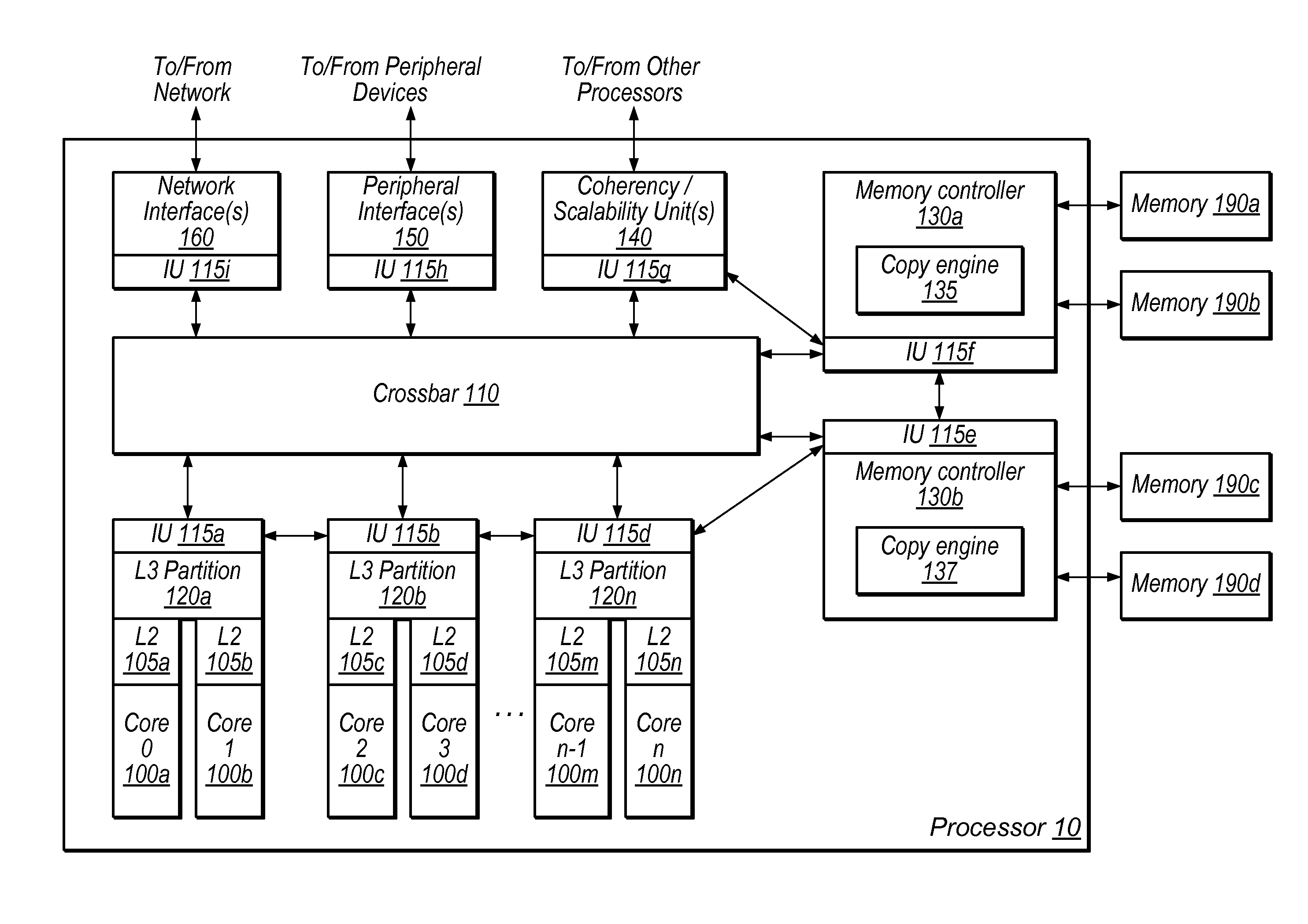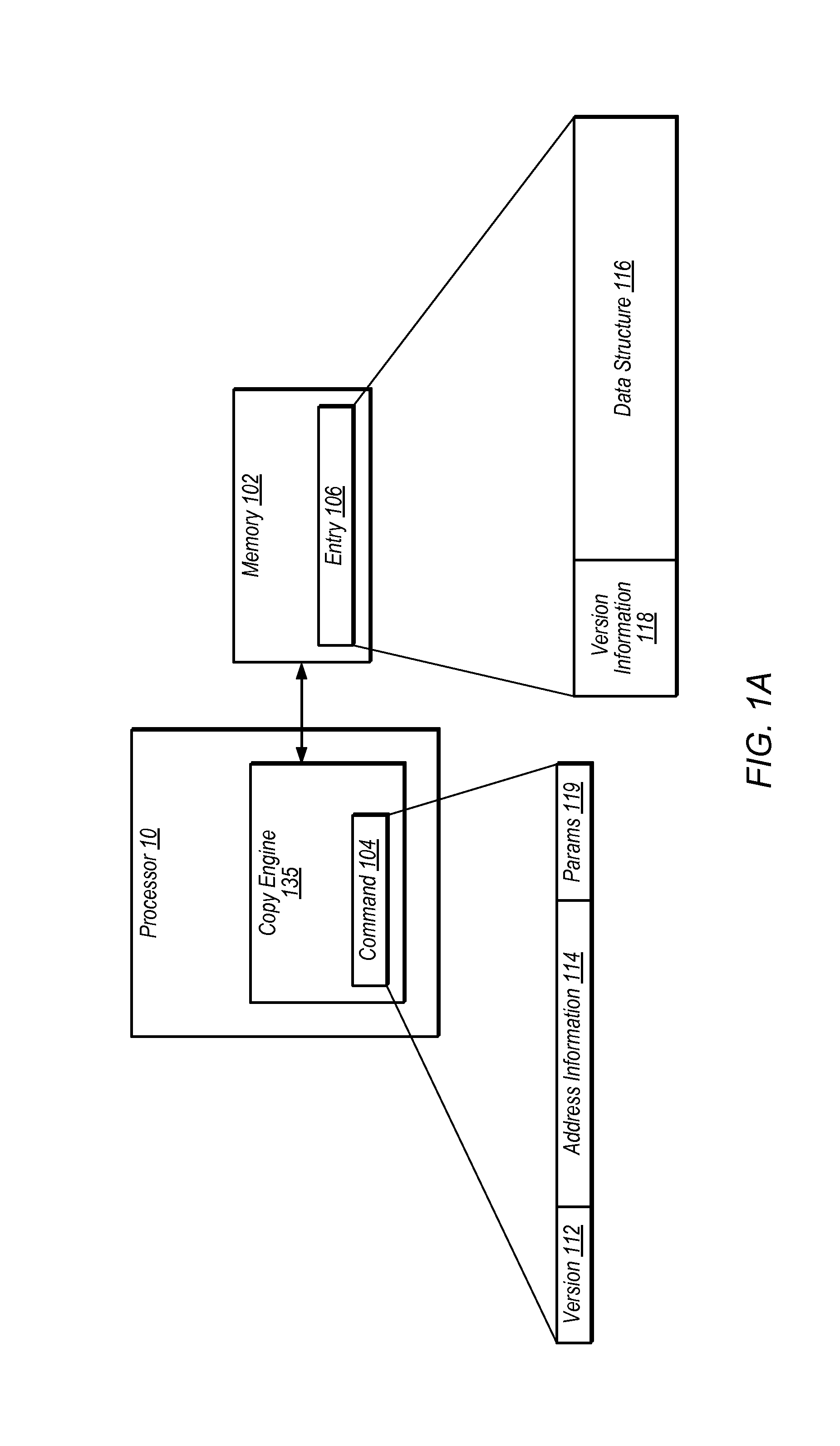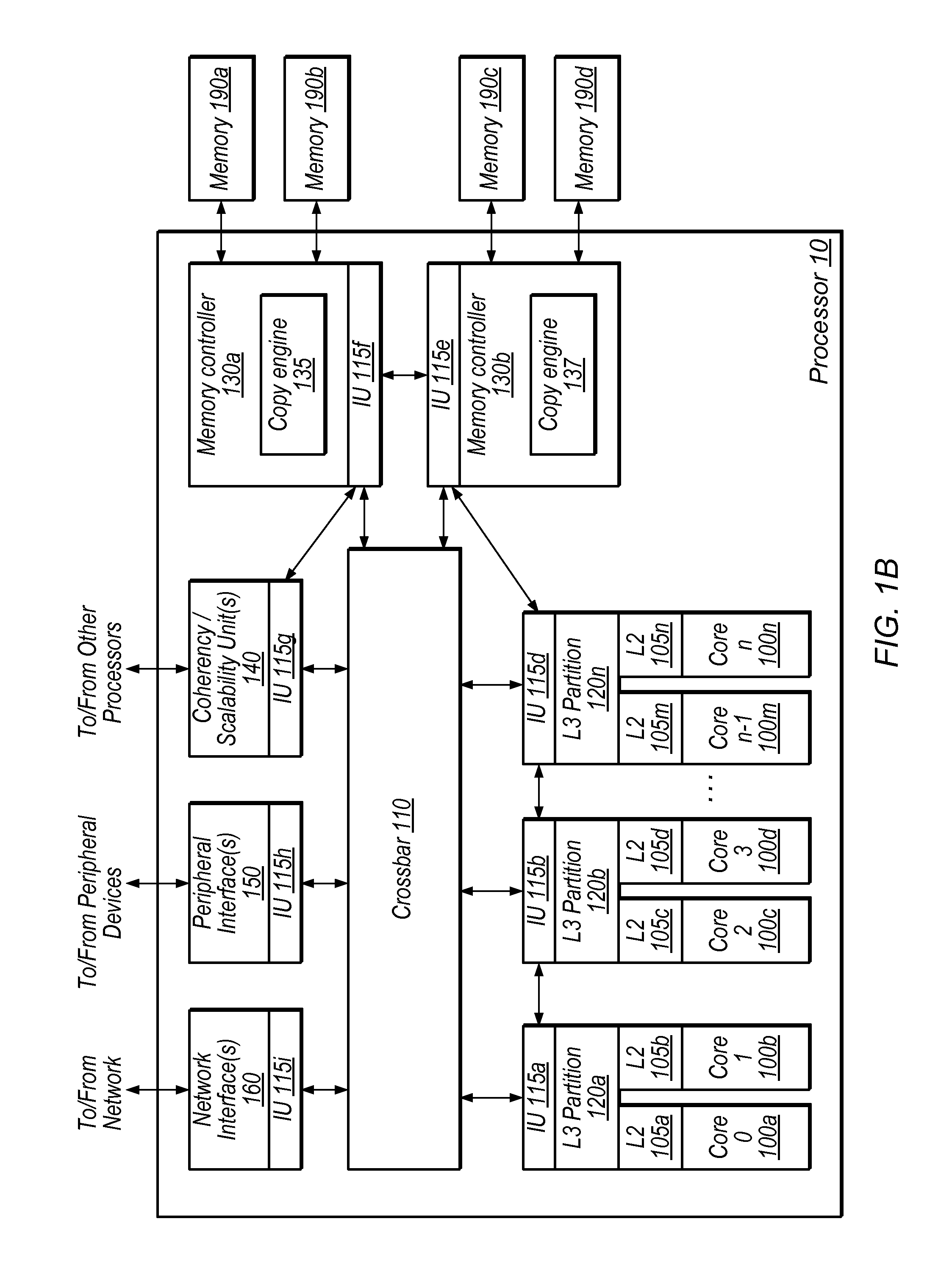Block memory engine with memory corruption detection
a memory corruption and block memory technology, applied in the field of memory corruption detection, can solve problems such as memory corruption, memory corruption, and contents of a memory location that are unintentionally modified, and achieve the effect of preventing corruption, preventing corruption, and preventing corruption
- Summary
- Abstract
- Description
- Claims
- Application Information
AI Technical Summary
Benefits of technology
Problems solved by technology
Method used
Image
Examples
Embodiment Construction
[0032]Introduction to Copy Engine with Memory Corruption Detection
[0033]As discussed above, memory corruption detection may prevent program crashes, unexpected program behavior, and / or malicious attacked associated with memory corruption. Software solutions exist for memory corruption detection. Debugging tools such as Oracle Solaris Studio, Purify, Valgrind, and Insure++ perform this detection. However, these debuggers typically perform instrumentation of the computer program, which may cause program execution to run hundreds of times slower.
[0034]In some embodiments, memory corruption detection may be performed in hardware. For example, data structures in memory may include a stored version number. Each memory access may also include a version number. According to this methodology, if the version number of a given memory access does not match the stored version number of a corresponding data structure, memory corruption is detected.
[0035]Applications often request block memory ope...
PUM
 Login to View More
Login to View More Abstract
Description
Claims
Application Information
 Login to View More
Login to View More - R&D
- Intellectual Property
- Life Sciences
- Materials
- Tech Scout
- Unparalleled Data Quality
- Higher Quality Content
- 60% Fewer Hallucinations
Browse by: Latest US Patents, China's latest patents, Technical Efficacy Thesaurus, Application Domain, Technology Topic, Popular Technical Reports.
© 2025 PatSnap. All rights reserved.Legal|Privacy policy|Modern Slavery Act Transparency Statement|Sitemap|About US| Contact US: help@patsnap.com



